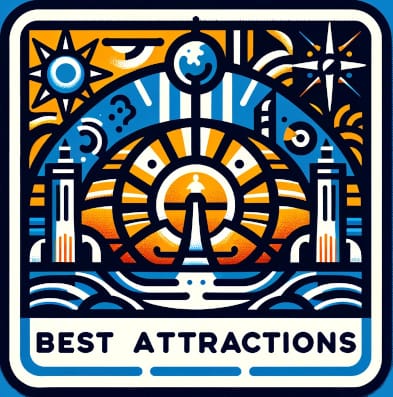Fiesta Mall: A Mesa Marvel’s Rise and Fall
In Mesa, Arizona, a shopping icon, Fiesta Mall, opened its doors on October 3, 1979. It wasn’t just a mall, a beacon of modern retail, a gathering spot for families and friends, and a symbol of Mesa’s burgeoning growth.
Developed by Homart Development Company, a subsidiary of Sears, Fiesta Mall began its journey with prominent anchor stores like Sears, The Broadway, and Goldwater’s, later joined by Diamond’s in 1980.
Situated near major attractions and thoroughfares, including the Superstition Freeway and Banner Desert Medical Center, Fiesta Mall was more than a shopping destination; it was a pivotal part of Mesa’s community life.
Over the years, Fiesta Mall mirrored the city’s transformations, adapting to changing trends and facing new challenges in the retail landscape.
It witnessed the comings and goings of stores, the shifts in consumer preferences, and the inevitable rise of competition.
This story of Fiesta Mall is a tale of retail glory, community significance, and the changing tides of commerce, a narrative deeply woven into the fabric of Mesa.
Things to do in Mesa, Arizona, often included a visit to Fiesta Mall, a place where shopping blended with social experiences, creating memories that have lasted long beyond its physical presence.
The Dawn of Fiesta Mall
The story of Fiesta Mall begins with a bold vision. Announced on October 8, 1970, this ambitious project was set to redefine the retail experience in Mesa, Arizona.
It was projected to cost between $35 million and $55 million, sprawling over 1.2 to 1.4 million square feet on 120 acres, a scale befitting the city’s and its developers’ aspirations.
The first landmark moment for Fiesta Mall was the opening of Sears on April 13, 1977.
This store was not just another retail outlet; it replaced Sears’ previous location in downtown Mesa, symbolizing a shift towards more modern, suburban shopping experiences.
On October 3, 1979, the mall welcomed the public, introducing Broadway, Sears, and Goldwater’s as its initial major anchor stores.
This trio of retail giants marked the beginning of Fiesta Mall’s journey as a central shopping destination in Mesa.
The early years of Fiesta Mall were marked by growth and excitement. In July 1980, Diamond’s joined as the fourth anchor store, expanding the mall’s retail diversity and appeal.
The foundations laid during these early years set the stage for Fiesta Mall’s emergence as a central figure in Mesa’s retail and social scene.
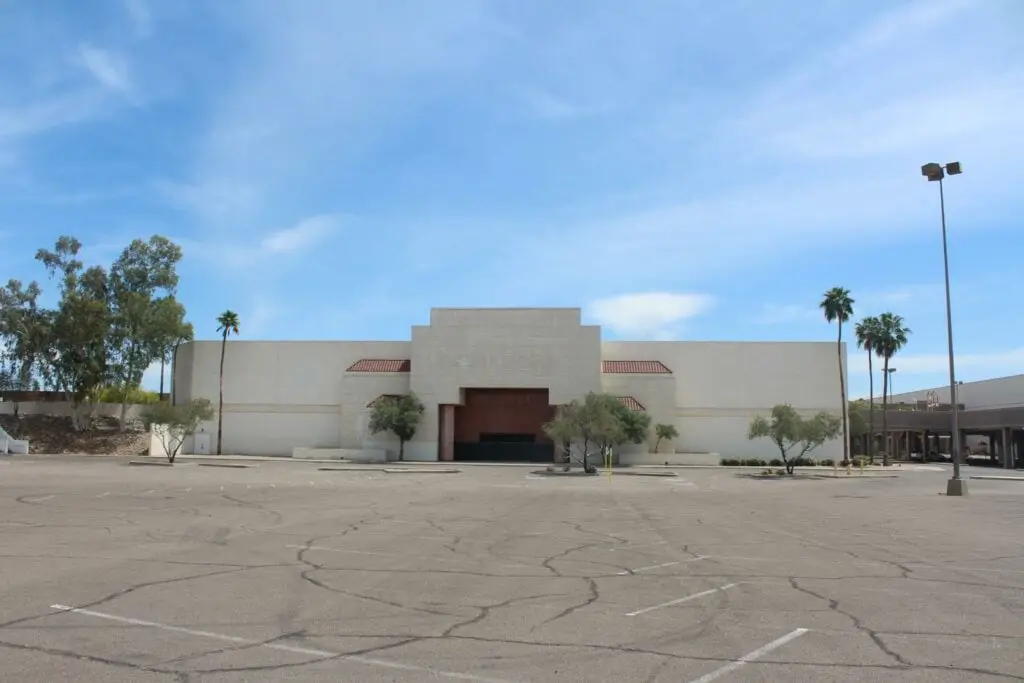
Fiesta Mall in Its Prime
During the 1980s and 1990s, Fiesta Mall blossomed into a retail powerhouse in Mesa. The mall’s success was partly due to the rapid population growth in the Southeast Valley and the construction of the Superstition Freeway, which made access easier for a growing number of visitors.
This era saw Fiesta Mall as a shopping destination and a social hub, drawing crowds from across the Valley for its diverse retail offerings and welcoming atmosphere.
A pivotal moment in Fiesta Mall’s history was the 1989 renovation. This makeover was more than a facelift; it shifted away from the mall’s original 1970s aesthetic.
The introduction of skylights and the removal of the dated orange and brown color scheme modernized the mall, aligning it with the evolving tastes of its customers.
In the early 1990s, Fiesta Mall reached its peak performance, securing a spot in the top 15% of regional malls nationwide in terms of sales.
Fiesta Mall stood as the East Valley’s commercial epicenter, a distinction confirmed by a 1992 survey from The Arizona Republic and The Phoenix Gazette, revealing that most Valley residents favored Fiesta Mall as their top shopping destination.
In December 1993, L&B Real Estate Counsel of Dallas recognized Fiesta Mall’s potential and purchased it for $124.3 million.
This acquisition underscored the mall’s significant position in the retail market. L&B’s investment was a vote of confidence in the mall’s continued success and its role in the thriving southeast Valley.
Under new ownership, Fiesta Mall continued to thrive, attracting a wide range of shoppers and maintaining its status as a key player in Mesa’s retail landscape.
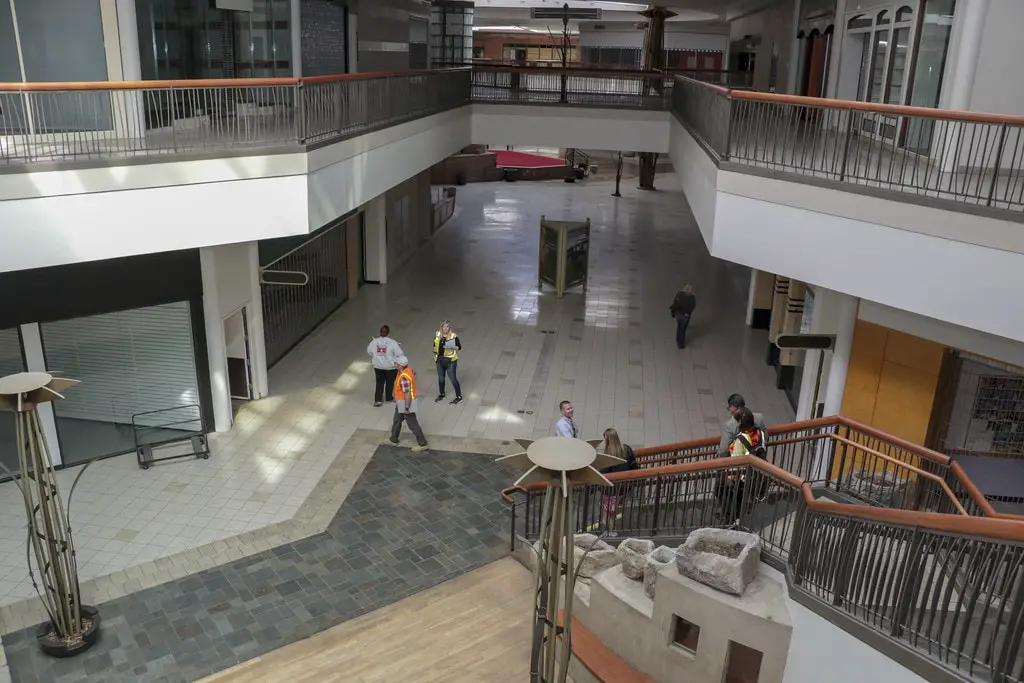
Emerging Challenges and Competition
By the late 1990s, Fiesta Mall began encountering significant challenges that started a shift in its fortune. The opening of Arizona Mills in neighboring Tempe in 1997 introduced a formidable competitor to Fiesta Mall.
This new development drew away many shoppers, signaling the start of a competitive era in the local retail landscape.
Although Fiesta Mall’s management initially brushed off this shift as a short-lived fascination with the new mall, the long-term impact was more pronounced.
The opening of Chandler Fashion Center in 2001, about eight miles from Fiesta Mall, further intensified the competition.
This event led to Fiesta Mall’s first sustained revenue drop due to competition from a neighboring mall.
The changing retail environment, marked by the emergence of these new shopping centers, began to reshape consumer habits and preferences, drawing away the crowds that once flocked to Fiesta Mall.
In March 2004, a study commissioned by the city highlighted the challenges facing Fiesta Mall. The report pointed out decreasing sales, difficulties attracting top-tier stores, and changing demographics as significant obstacles.
This period also saw an uptick in crime and gang activity in the surrounding area, adding to the mall’s woes.
Despite these challenges, the study noted that the sales per square foot at Fiesta Mall remained above the threshold for ‘vulnerable malls,’ indicating that it was still standing amidst the increasing competition and changing market dynamics.
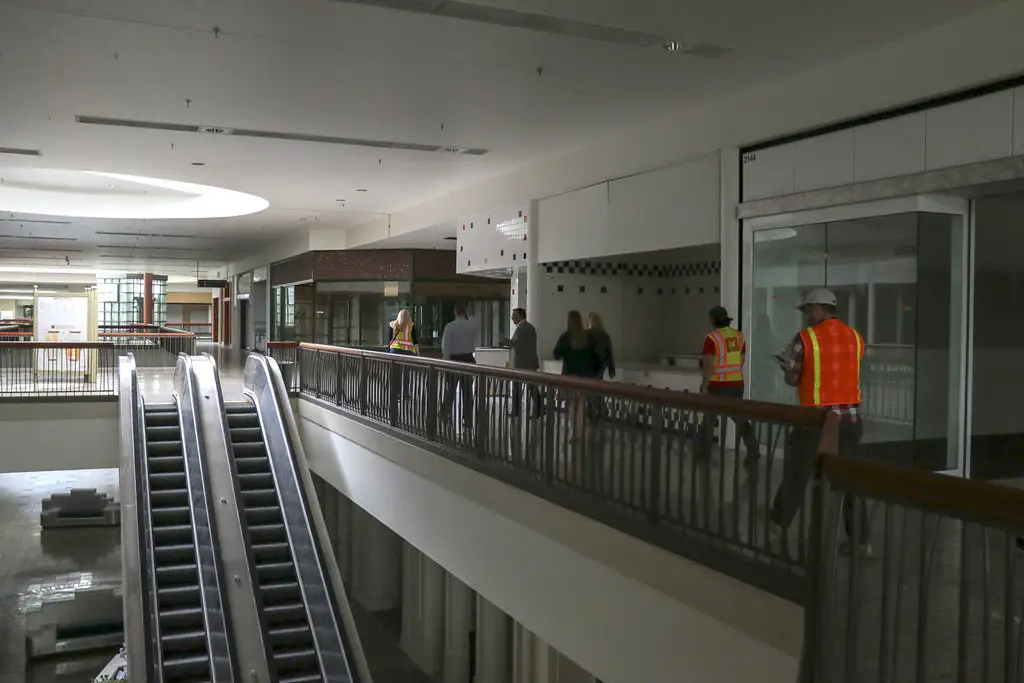
The Decline and Closure of a Retail Giant
The early 2000s marked the beginning of a steep decline for Fiesta Mall. One of the most significant blows came with losing one of its four anchors, Robinsons-May, in 2006 following its merger with Macy’s.
This event was more than just a store closure; it weakened the mall’s retail foundation. The space vacated by Macy’s was split into Best Buy and Dick’s Sporting Goods, but this change did little to stem the tide of decreasing sales.
The economic recession and the opening of newer shopping centers like Mesa Riverview and Tempe Marketplace in 2007 further exacerbated Fiesta Mall’s declining fortunes.
The period between 2006 and 2008 was critical for Fiesta Mall. Crime rates, particularly property crimes and incidents related to gang activity, surged around the mall.
Notably, in 2007, Mesa police reported a jump in gang activity at Fiesta, contradicting the mall officials’ denials. This increased crime contributed to the mall’s deteriorating public perception and added to its challenges.
The tragic stabbing incident on March 31, 2008, where a man with alleged gang links fatally injured a patron, underscored the growing safety concerns.
By 2013, the value of Fiesta Mall had plummeted to $39.5 million, a stark contrast to its valuation in 2004. Facing an ‘imminent default’ due to tenancy issues, Westcor, the mall’s owner, turned over Fiesta Mall to its lenders.
The closure of Macy’s in early 2014 further fueled fears about the mall’s future. By October 2016, only 35 businesses remained operational in a space that once housed over 100.
In November 2017, it was revealed that Sears would be shutting down, marking its inclusion in a nationwide strategy to close 63 stores.
The final closure of the mall on January 27, 2018, marked the end of an era for what was once a bustling hub of commerce and community in Mesa.
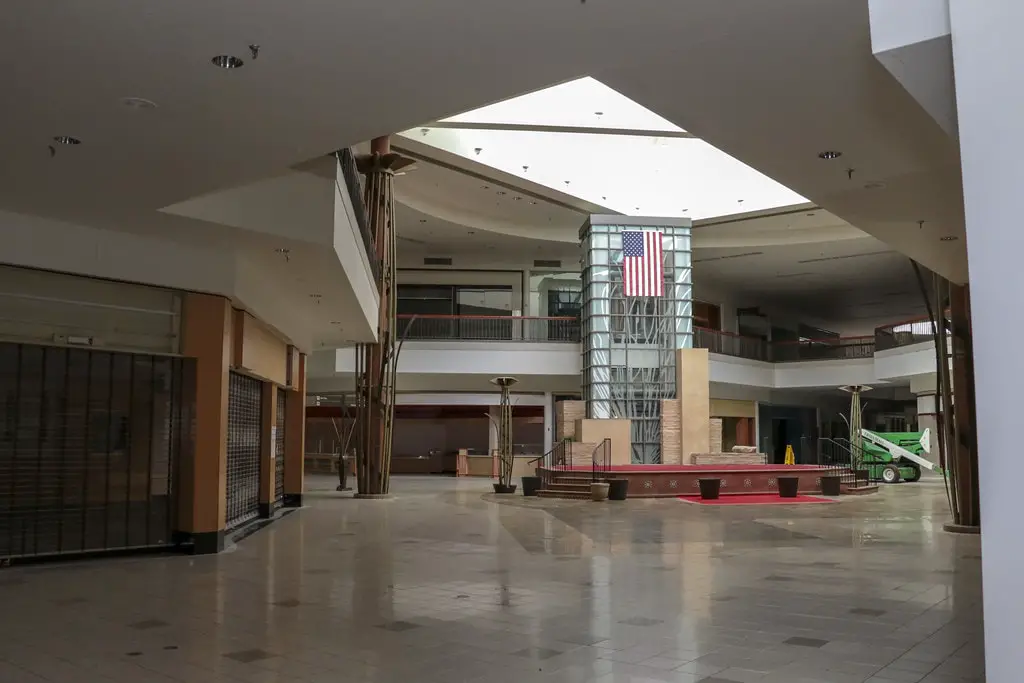
Post-Closure: A New Chapter Begins
After its closure, Fiesta Mall entered a period of uncertainty and potential rebirth. In 2017, the baton passed to Dimension Financial & Realty Investments, which acquired the mall with plans to breathe new life into the space.
They had a bold plan: investing $30 million to transform the once-mighty retail center into a hub for educational and healthcare facilities.
This initiative aimed to transform the mall into a vibrant center for community colleges and for-profit schools, adapting to the evolving needs of the Mesa community.
Despite these intentions, the transformation faced challenges, and the site’s future remained in flux.
The most recent turn in Fiesta Mall’s story unfolded in May 2023, when it was announced that the Arizona Coyotes were considering the mall site for a new arena.
This development came after rejecting the Tempe Arena proposal, highlighting the site’s continued potential as a key location in Mesa.
The idea of a new arena brings hope and excitement about reinvigorating the area, offering a new purpose and identity to the space that once housed Fiesta Mall.
The demolition, which began on July 17, 2023, marked the physical end of Fiesta Mall. The process symbolized the final farewell to a once-thriving shopping center, starting with the former Macy’s building.
Yet, there lay the promise of new beginnings and opportunities in its place. The site of Fiesta Mall, once a landmark of retail and social life, now stands poised for a new chapter, potentially playing a significant role in Mesa’s future urban and economic landscape.
Legacy of Fiesta Mall
As the dust settles on the site of the once-vibrant Fiesta Mall, its legacy within Mesa, Arizona, endures. For decades, Fiesta Mall was more than a shopping center; it was a communal space where memories were made, trends were set, and the city’s growth and changes were mirrored.
From its grand opening in 1979 to its closure in 2018, Fiesta Mall witnessed the evolution of retail, the shifts in consumer habits, and the challenges of an ever-changing economic landscape.
Fiesta Mall’s story reflects a broader narrative in the retail world, where traditional malls have faced the winds of change, adapting to new consumer preferences and the rise of online shopping.
Its rise and fall serve as a reminder of the transient nature of commercial success and the importance of adapting to changing times.
The mall’s transformation from a bustling retail hub to a potential site for educational and healthcare facilities and possibly a new sports arena underscores the dynamic nature of urban spaces.
As Mesa continues to grow and evolve, the legacy of Fiesta Mall remains a significant chapter in its history.
It symbolizes a bygone era of retail glory, a testament to the city’s growth, and a mirror reflecting the broader retail and urban development trends.
The story of Fiesta Mall, though concluded in its original form, continues to inspire and inform the future of community spaces and commercial ventures in Mesa and beyond.
Bundle your hotel + flight together to save more on your next trip! Book now at Expedia.com
